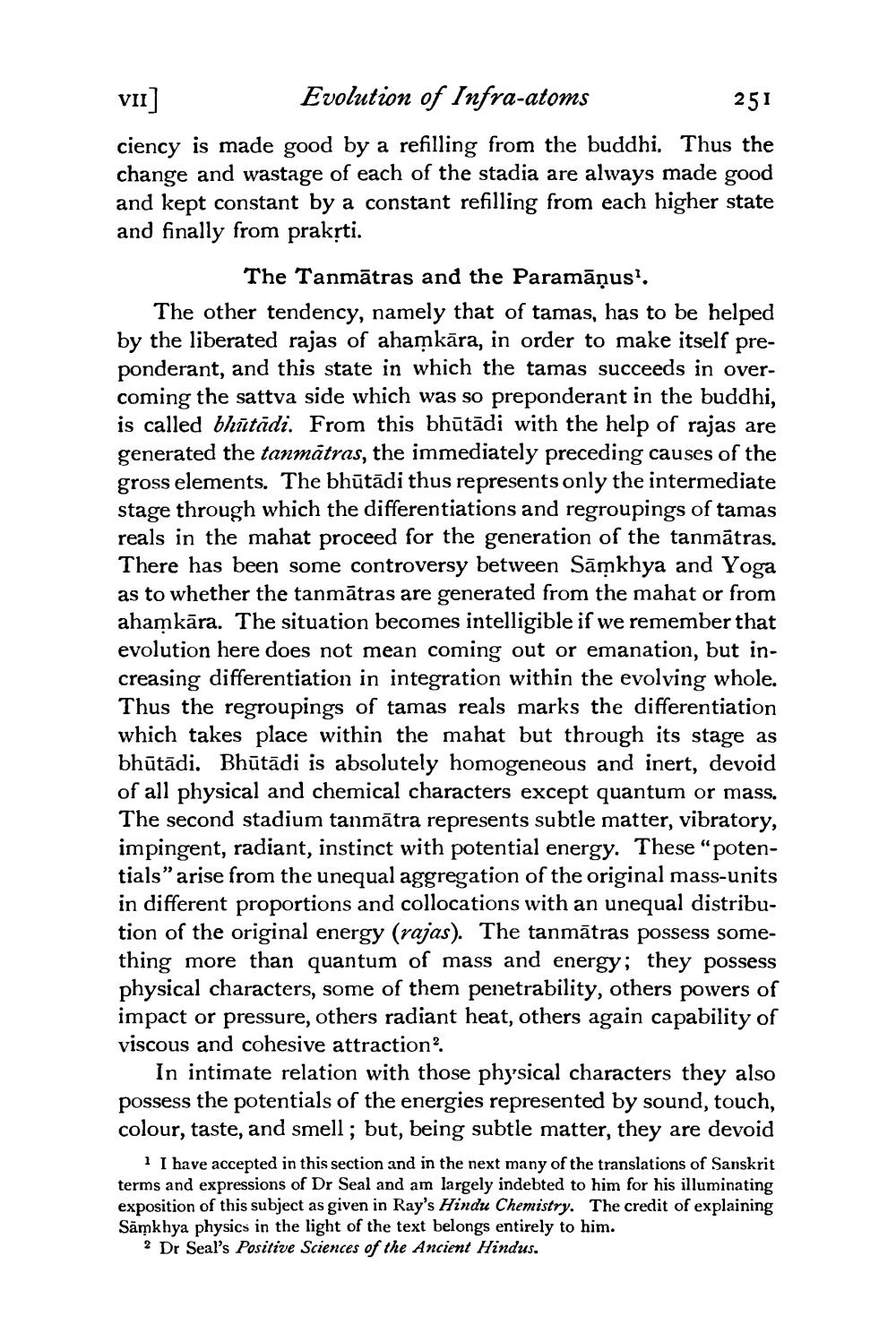________________
VII] Evolution of Infra-atoms
251 ciency is made good by a refilling from the buddhi. Thus the change and wastage of each of the stadia are always made good and kept constant by a constant refilling from each higher state and finally from prakrti.
The Tanmātras and the Paramāņus'. The other tendency, namely that of tamas, has to be helped by the liberated rajas of ahamkāra, in order to make itself preponderant, and this state in which the tamas succeeds in overcoming the sattva side which was so preponderant in the buddhi, is called bhūtādi. From this bhūtādi with the help of rajas are generated the tanmätras, the immediately preceding causes of the gross elements. The bhūtādi thus represents only the intermediate stage through which the differentiations and regroupings of tamas reals in the mahat proceed for the generation of the tanmātras. There has been some controversy between Samkhya and Yoga as to whether the tanmātras are generated from the mahat or from ahamkāra. The situation becomes intelligible if we remember that evolution here does not mean coming out or emanation, but increasing differentiation in integration within the evolving whole. Thus the regroupings of tamas reals marks the differentiation which takes place within the mahat but through its stage as bhūtādi. Bhūtādi is absolutely homogeneous and inert, devoid of all physical and chemical characters except quantum or mass. The second stadium tanmātra represents subtle matter, vibratory, impingent, radiant, instinct with potential energy. These "potentials" arise from the unequal aggregation of the original mass-units in different proportions and collocations with an unequal distribution of the original energy (rajas). The tanmātras possess something more than quantum of mass and energy; they possess physical characters, some of them penetrability, others powers of impact or pressure, others radiant heat, others again capability of viscous and cohesive attraction?
In intimate relation with those physical characters they also possess the potentials of the energies represented by sound, touch, colour, taste, and smell; but, being subtle matter, they are devoid
1 I have accepted in this section and in the next many of the translations of Sanskrit terms and expressions of Dr Seal and am largely indebted to him for his illuminating exposition of this subject as given in Ray's Hindu Chemistry. The credit of explaining Samkhya physics in the light of the text belongs entirely to him.
2 Dr Seal's Positive Sciences of the Ancient Hindus.




